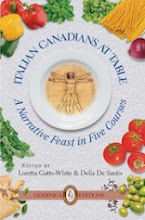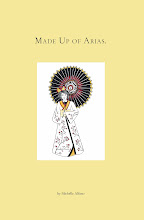Friday, June 14, 2013
The Testament of Mary
The
Testament of Mary by Colm Tóibín (McClelland & Stewart, 2012) 104 pages
When
we traveled to Ephesus, Turkey in the 1990s to see the famous ruins there, the
home that Mary, the mother of Jesus, purportedly lived and died in, was pointed
out to us from the ruins. It sat, a lonely structure, on an isolated hill. It
seemed a strange location for Mary to end her days, so far from her home, so
far from her people. Perhaps Tóibín thought the same thing and this served as
the genesis for this melancholy book about Mary's life.
Tóibín
comes at a portrait of Mary from a decidedly different and slightly disturbing
angle … what happened to Mary after Jesus’ crucifixion? How did she come to be
in Ephesus? With whom did she live? How did she feel about the events that
happened?
When
this short novella begins, Mary is being held as a sort of captive in Ephesus
by Jesus’ followers who are attempting to record the details of his life,
prodding her for memories, shaping a narrative about her son that she does not
entirely agree with. She is a sort of prisoner to the fame that surrounds Jesus
and the religion he has spawned.
She
recounts the famous miracles that Jesus was credited with – the raising of Lazarus from the dead, the turning of water into wine at the wedding at Cana,
walking on water on the Sea of Galilee – and then turns to events that lead to
the last days of his life on earth.
It
is infinitely amusing to think of Mary actively disliking the apostles and
Jesus’ followers – she finds that they are too strident, too fevered. In this book, Mary is suspicious of their idolatry and beseeches her son
to be careful, to be judicious around them. In a manner, Jesus is portrayed as
being more like a petulant teenager who won't heed a maternal warning than the
Savior of Christianity.
There
is the explicit suggestion that he was betrayed by Marcus, Mary's cousin
(whether this is a historical figure, I don't know). After Jesus is captured,
tortured and crucified by the Romans, a graphic and disturbing description here
that Mary witnesses with great anguish, Mary sees that she is being watched and
pursued, and flees with a stranger into Turkey where she will eventually live
the rest of her life.
She
understands, with a kind of horror, that his followers are constructing a myth
around
his life and deeds and recording them for posterity – specifically that he was the
son of God - a position that she cautiously challenges being full aware of who the man's father was. She feels “the enormity of their ambition and the innocence of
their belief”. Mary listens with wonder to the speculation that Jesus’ father
was God and that Jesus died to “save” us (a concept that bedeviled me as a
child - save us from what - from sins we have not yet committed?). And when
Mary does not respond with the appropriate enthusiasm, she sees something
“dark” in their faces - a threat, a
sense of coercion, that inspires fear in her.
But
Mary is not depicted as a passive victim, eyes averted in perpetual sorrow.
When her captors try and sit in a chair that Mary always reserves for her long
deceased husband, she threatens them with a knife.
Tóibín
tries hard, and largely successfully, to communicate the tremendous sorrow that
Mary experiences witnessing the torture and death of her son, and her anguish
that she can do nothing to save him. But, here, we see something more than the
suffering mother – we see a woman trapped inside the beginnings of an ideology,
in a cult-like atmosphere. She sees that his acolytes have taken this singular
man, who acted with bravery, did some astonishing things, and was then raised
to the level of a god.
And
… whose mortal mother could do nothing to dissuade them from this view nor
protect herself from their "solicitude" after his death.
Subscribe to:
Post Comments (Atom)












No comments:
Post a Comment